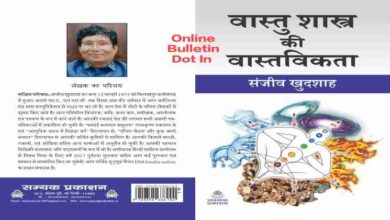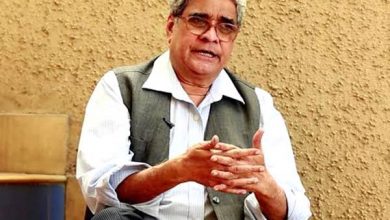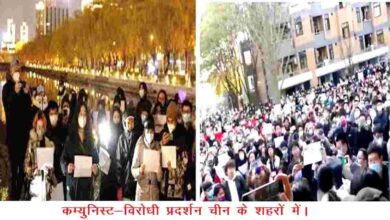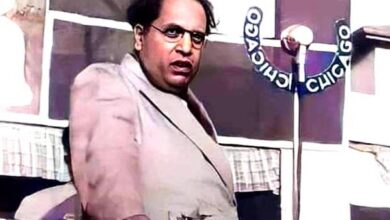महिलाओं का कौशल और रोजगार: भारत की प्रगति के आधार mahilaon ka kaushal aur rojagaar: bhaarat kee pragati ke aadhaar

©डॉ. सत्यवान सौरभ
परिचय– हिसार, हरियाणा.
भारत में अधिकांश महिलाओं को न तो सामाजिक सुरक्षा और न ही नौकरी की सुरक्षा। आमतौर पर महिलाओं को कम-कौशल और कम वेतन वाले काम में लगाया जाता है। कौशल कार्यक्रमों में जीवन कौशल, संचार क्षमता, निर्णय लेने की क्षमता और आत्मविश्वास को एकीकृत करने की भी आवश्यकता है। इसके अलावा, सामाजिक-आर्थिक समर्थन, प्रासंगिक कौशल, गारंटीकृत नौकरियों और कम बाधाओं के लिए महिला-केंद्रित समूह और महिलाओं के लिए अर्थव्यवस्था के विभिन्न क्षेत्रों में प्रवेश करने और भारत की प्रगति में योगदान करने के लिए एक सुलभ प्रवेश द्वार तैयार करना चाहिए।
राष्ट्रीय कौशल विकास मिशन इस बात पर जोर देता है कि महिलाएं जनसांख्यिकीय लाभांश का आधा हिस्सा हैं और महिला कौशल देश की श्रम शक्ति में उनकी भागीदारी बढ़ाने की कुंजी हो सकती है। आंकड़ों से पता चलता है कि पुरुषों के लिए 56.8% की तुलना में महिला श्रम बल की भागीदारी 16.9% है; इसलिए स्किलिंग को एक समाधान के रूप में आगे बढ़ाया गया है। महिलाओं को रोजगार योग्य कौशल से लैस करना पुरुषों को कुशल बनाने की तुलना में कहीं अधिक बड़ी चुनौती है। भारत में अधिकांश महिलाओं को न तो सामाजिक सुरक्षा और न ही नौकरी की सुरक्षा। आमतौर पर महिलाओं को कम-कौशल और कम वेतन वाले काम में लगाया जाता है।
भारत में, पुरुषों की तुलना में महिला श्रमिकों का उच्च प्रतिशत अनौपचारिक अर्थव्यवस्था का हिस्सा है जिसमे से 94 प्रतिशत महिला श्रमिक अनौपचारिक क्षेत्रों में हैं। अधिक अनौपचारिकता नए कौशल हासिल करने कि कमी की ओर ले जाती है, नए रोजगार सृजित नहीं होते, जिससे कार्यबल को नुकसान झलना पड़ता है। महिला कार्यबल के मामले में, व्यापक अनौपचारिकता को अन्य चुनौतियों में जोड़ा जाता है जो उन्हें काम में भाग लेने से रोकती हैं – जैसे परिवार और देखभाल करने का बोझ, प्रतिबंधात्मक सामाजिक मानदंड और गतिशीलता पर सीमाएं। हम देखते है कि कौशल प्रशिक्षण में भी अपरिहार्य लिंग अंतर दिखाई देता है।
इन सब के बावजूद महिला कौशल के लिए सरकार की पहल का परिणाम है कि औद्योगिक प्रशिक्षण संस्थानों (आईटीआई) में 30 प्रतिशत सीटें महिलाओं के लिए आरक्षित हैं। महिलाओं के लिए विशिष्ट राष्ट्रीय कौशल प्रशिक्षण संस्थान दो योजनाओं के तहत प्रशिक्षण प्रदान करते हैं; शिल्पकार प्रशिक्षण योजना (सीटीएस) और शिल्प प्रशिक्षक प्रशिक्षण योजना (सीआईटीएस)। इनके साथ-साथ प्रधान मंत्री कौशल विकास योजना (पीएमकेवीवाई) अल्पकालिक कौशल प्रशिक्षण प्रदान करती है और पीएमकेवीवाई के तहत करीब 50 प्रतिशत उम्मीदवार महिलाएं हैं।
प्रधान मंत्री कौशल विकास योजना अपने तीसरे चरण में है और इस दौरान करोड़ों महिलाओं को प्रशिक्षित किया है। दीन दयाल उपाध्याय ग्रामीण कौशल योजना (डीडीयू-जीकेवाई), ग्रामीण युवाओं के लिए प्लेसमेंट से जुड़ा कौशल विकास कार्यक्रम, महिलाओं के लिए 33 प्रतिशत आरक्षण प्रदान करता है। आजीविका संवर्धन के लिए कौशल अधिग्रहण और ज्ञान जागरूकता (संकल्प) योजना का लक्ष्य अल्पकालिक व्यावसायिक प्रशिक्षण में महिलाओं की भागीदारी को बढ़ाना है। यह पीएमकेवीवाई जैसी कौशल प्रशिक्षण योजनाओं के लिए एक सहायक कार्यक्रम है। भारत में, 4 में से 3 महिलाएं काम नहीं करती हैं, हालांकि साक्षरता दर में लगातार वृद्धि हुई है। क्या कौशल, जीवन और सीखने का समर्थन और नौकरियों की गारंटी इसे बदल सकती है?
राष्ट्रीय शिक्षुता संवर्धन योजना (एनएपीएस) कौशल और नियुक्ति के लिए शिक्षुता मॉडल का अनुसरण करती है। 2020 में क्वांटम हब द्वारा मूल्यांकन में कहा गया है कि एनएपीएस महिला प्रशिक्षुओं के लिए कोई विशेष प्रावधान नहीं करता है, जैसे कार्यस्थल पर सुरक्षा, या उन्हें लिंग-अनुकूल बुनियादी ढांचा प्रदान करना। जन शिक्षण संस्थान खासकर गैर-साक्षर और स्कूल छोड़ने वालों, विशेषकर महिलाओं को कौशल प्रदान करने पर केंद्रित है।
भारत में कौशल प्रशिक्षण कार्यक्रम पारंपरिक लिंग भूमिकाओं और महिलाओं के काम की धारणाओं पर आधारित हैं, जो ज्यादातर घर से संबंधित कार्यों और देखभाल करने तक ही सीमित हैं। उदाहरण के लिए, पीएमकेवीवाई के तहत महिलाओं के लिए पाठ्यक्रम परिधान, सौंदर्य, स्वास्थ्य और स्वास्थ्य सेवा जैसे क्षेत्रों पर केंद्रित हैं – यह महिलाओं को अधिक लाभकारी क्षेत्रों से दूर रखता है। महिलाओं के लिए राष्ट्रीय कौशल प्रशिक्षण संस्थान केवल 21 पाठ्यक्रम प्रदान करते हैं, जबकि सामान्य आईटीआई, जहां पुरुष प्रधान हैं, 153 पाठ्यक्रम प्रदान करते हैं। कौशल प्रशिक्षण में विविधता की यह कमी नौकरी बाजार के लिंग अलगाव को दर्शाती है।
मगर देश के कई एनजीओ महिलाओं को नौकरियों में प्रशिक्षित करते हैं जो रूढ़िवादिता को तोड़ने में मदद करते हैं, इस प्रकार उन्हें पारंपरिक रूप से पुरुष-प्रधान आजीविका तक पहुंच प्रदान करते हैं, जिससे वे पारंपरिक रूप से उन्हें सौंपी गई नौकरियों (जैसे घरेलू सेवा और देखभाल) की तुलना में अधिक कमाने में सक्षम होते हैं। उदाहरण के लिए आजाद फाउंडेशन की वीमेन ऑन व्हील्स, जहां महिलाओं को पेशेवर ड्राइविंग में प्रशिक्षित किया जाता है और गुजरात में निर्माण श्रमिकों के लिए स्व-नियोजित महिला संघ (सेवा) कर्मिका स्कूल।
कौशल के लिए रणनीति में स्थानीय स्वयं सहायता समूह का उपयोग करना शामिल है ताकि सहायक परिवारों के साथ महिला श्रमिकों की पहचान की जा सके और इन महिलाओं को प्रासंगिक जानकारी प्रदान की जा सके ताकि उन्हें कौशल लेने के लिए प्रोत्साहित किया जा सके। स्किलिंग को डिजिटल युग के परिवर्तनों से निपटने की जरूरत है। विशेष रूप से महिलाओं के लिए समावेशी डिजिटल कौशल के लिए सार्वजनिक-निजी भागीदारी आगे का रास्ता हो सकती है। जैसे माइक्रोसॉफ्ट और राष्ट्रीय कौशल विकास निगम एक सार्वजनिक-निजी भागीदारी में, डिजिटल कौशल में 100,000 से अधिक अयोग्य महिलाओं को प्रशिक्षित करते हैं। एसएपी इंडिया और माइक्रोसॉफ्ट ने प्रौद्योगिकी से संबंधित करियर के लिए प्रशिक्षित करने के लिए, अयोग्य समुदायों की 62,000 महिला छात्रों के लिए एक संयुक्त कौशल कार्यक्रम ‘टेक सक्षम’ शुरू किया है।
आज देश को कौशल कार्यक्रमों में जीवन कौशल, जैसे संचार क्षमता, निर्णय लेने की क्षमता और आत्मविश्वास को एकीकृत करने की भी आवश्यकता है। इसके अलावा, सामाजिक-आर्थिक समर्थन, प्रासंगिक कौशल, गारंटीकृत नौकरियों और कम बाधाओं के लिए महिला-केंद्रित समूह और महिलाओं के लिए अर्थव्यवस्था के विभिन्न क्षेत्रों में प्रवेश करने और भारत की प्रगति में योगदान करने के लिए एक सुलभ प्रवेश द्वार तैयार करना चाहिए।
जब तक महिला श्रम को केंद्रित समर्थन नहीं दिया जाता, तब तक अकेले साक्षरता के लाभकारी रोजगार में तब्दील होने की संभावना नहीं है। हमें सामाजिक-आर्थिक समर्थन, प्रासंगिक कौशल, गारंटीकृत नौकरियों और महिलाओं के लिए अर्थव्यवस्था के विभिन्न क्षेत्रों में प्रवेश करने के लिए एक सुलभ प्रवेश द्वार बनाने, भारत की प्रगति में सक्रिय रूप से योगदान देने वाली महिला-केंद्रित सक्षमता पहलों का एक गुलदस्ता चाहिए। महिलाओं के सशक्तिकरण के लिए वास्तविक वित्तीय और सामाजिक समावेशन के लिए कई मोर्चों पर मजबूत प्रयासों की आवश्यकता है।

Dr Satywan Saurabh
Most of the women in India have neither social security nor job security. Women are generally employed in low-skill and low-paying jobs. There is also a need to integrate life skills, communication ability, decision making ability and confidence in skill programmes. In addition, women-centric groups for socio-economic support, relevant skills, guaranteed jobs and fewer barriers should create an accessible gateway for women to enter various sectors of the economy and contribute to India’s progress.
The National Skill Development Mission emphasizes that women constitute half of the demographic dividend and women skills can be the key to increasing their participation in the country’s labor force. The data shows female labor force participation is 16.9%, compared to 56.8% for men; Hence skilling has been pushed as a solution. Equipping women with employable skills is a far greater challenge than skilling men. Most of the women in India have neither social security nor job security. Women are generally employed in low-skill and low-paying jobs.
In India, a higher percentage of female workers than males are part of the informal economy, of which 94 percent are female workers in the informal sector. High informality leads to shortage of new skills, new jobs are not created, which in turn leads to loss of workforce. In the case of the female workforce, widespread informality is added to other challenges that prevent them from participating in work – such as the burden of family and caregiving, restrictive social norms and limits on mobility. We see that there is an inevitable gender gap in skill training as well.
Despite all this, the government’s initiative for women skills has resulted in 30 per cent seats in Industrial Training Institutes (ITIs) being reserved for women. Specialized National Skill Training Institutes for Women provide training under two schemes; Craftsman Training Scheme (CTS) and Craft Instructor Training Scheme (CITS). Along with these, the Pradhan Mantri Kaushal Vikas Yojana (PMKVY) provides short-term skill training and about 50 percent of the candidates under PMKVY are women.
Pradhan Mantri Kaushal Vikas Yojana is in its third phase and has trained crores of women during this period. Deen Dayal Upadhyaya Grameen Kaushal Yojana (DDU-GKY), a placement-linked skill development program for rural youth, provides 33 percent reservation for women. The Skill Acquisition and Knowledge Awareness (SANKALP) Scheme for Livelihood Enhancement aims to increase the participation of women in short term vocational training. It is a supporting program for skill training schemes like PMKVY. In India, 3 out of 4 women do not work, although there has been a steady increase in the literacy rate. Can skills, life and learning support and guarantees of jobs change this?
The National Apprenticeship Promotion Scheme (NAPS) follows the apprenticeship model for skilling and placement. An assessment by Quantum Hub in 2020 states that NAPS does not make any special provisions for women trainees, such as safety at the workplace, or providing them with gender-friendly infrastructure. Jan Shikshan Sansthan focuses on imparting skills especially to the non-literate and school dropouts, especially women.
Skill training programs in India are based on traditional gender roles and perceptions of women’s work, mostly confined to home-related tasks and caregiving. For example, courses for women under PMKVY focus on areas such as apparel, beauty, health and healthcare – this keeps women away from the more profitable sectors. The National Skill Training Institute for Women offers only 21 courses, while the general ITIs, where male dominated, offer 153 courses. This lack of diversity in skills training reflects the gender segregation of the job market.
But many of the country’s NGOs train women in jobs that help break stereotypes, thus giving them access to traditionally male-dominated livelihoods, allowing them to access jobs traditionally assigned to them (such as domestic service). and care). For example the Azad Foundation’s Women on Wheels, where women are trained in professional driving, and the Self-Employed Mahila Sangha (Seva) Karmika School for construction workers in Gujarat.
The strategy for skilling includes using local SHGs to identify women workers with supportive families and providing relevant information to these women to encourage them to take up skills. Skilling is needed to cope with the changes of the digital age. Public-private partnerships may be the way forward for inclusive digital skills, especially for women. Like Microsoft and the National Skill Development Corporation, in a public-private partnership, train more than 100,000 underserved women in digital skills. SAP India and Microsoft have launched ‘Tech Saksham’, a joint skilling program for 62,000 female students from underserved communities, to train them for technology-related careers.
Today, the country also needs to integrate life skills, such as communication ability, decision making ability and self-confidence, into skilling programmes. In addition, women-centric groups for socio-economic support, relevant skills, guaranteed jobs and fewer barriers should create an accessible gateway for women to enter various sectors of the economy and contribute to India’s progress.
Unless there is focused support for female labor, literacy alone is unlikely to translate into gainful employment. We need a bouquet of women-centric enablement initiatives that actively contribute to India’s progress, creating socio-economic support, relevant skills, guaranteed jobs and an accessible gateway for women to enter various sectors of the economy. Empowerment of women requires strong efforts on multiple fronts for real financial and social inclusion.















